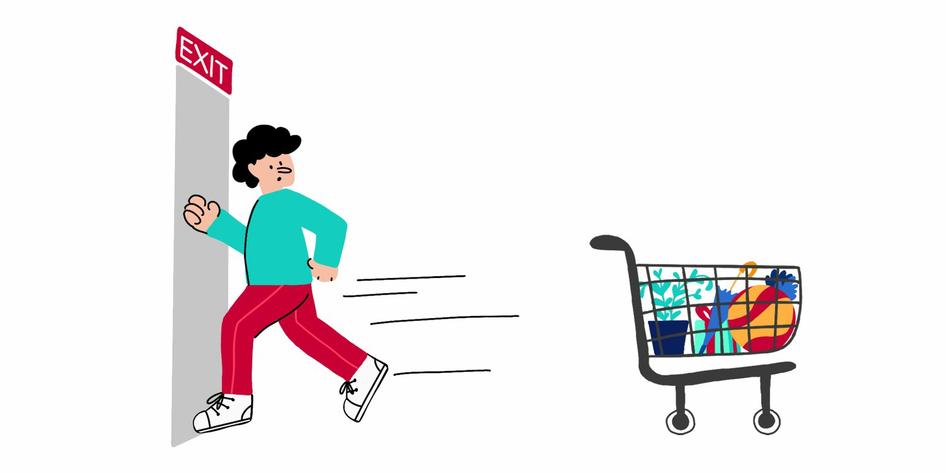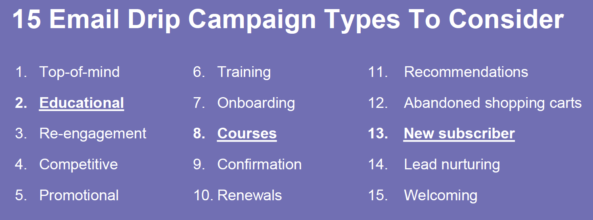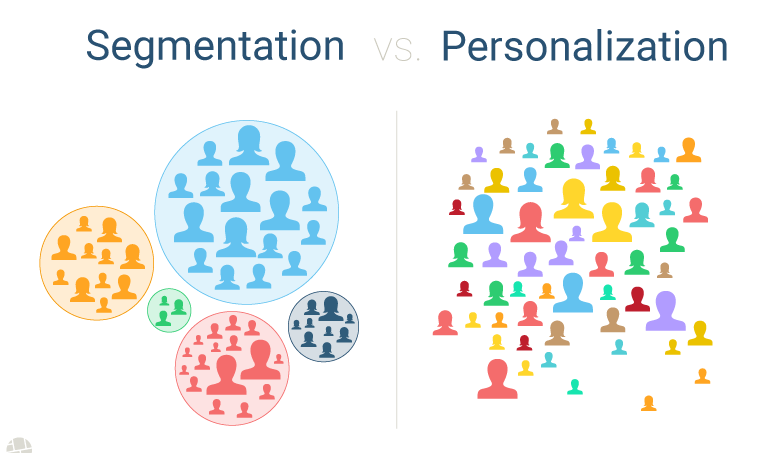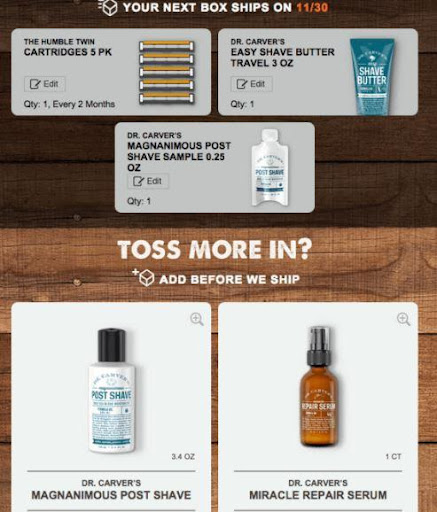In the competitive retail landscape, establishing robust customer engagement is paramount for fostering enduring brand relationships. Drip marketing emerges as a strategic solution, particularly when studies indicate that a staggering 70% of consumers are inclined to spend more with brands that personalize their services.
This sophisticated approach isn’t merely about occasional emails detailing product benefits or exclusive offers; it’s a meticulously calibrated process akin to nurturing a sapling until it reaches its full potential. Through this article, we will delve into the nuances of drip marketing, elucidating its significance in enhancing customer engagement and what this implies for the retail industry.
Table of Contents
- > What is drip marketing?
- > What is a drip campaign?
- > When to use drip marketing
- > Why retailers should adopt drip marketing
- > Staging a drip campaign: A proven framework
- > Types of drip campaigns
- > Drip marketing best practices
- > Drip marketing examples from prominent retailers
- > Drip marketing statistics and emerging trends
- > Frequently Asked Questions
- > Embracing Drip Marketing – A game-changer for retail success
What is drip marketing?
Drip Marketing Definition: A concept that gained traction in the late 90s with the rise of email marketing, pertains to the strategic dissemination of marketing materials to customers over a predetermined timeline. This approach has matured, leveraging the latest in technology and data analytics to incorporate a variety of communication channels such as email, direct mail, social media, and SMS messaging. Retailers benefit immensely from drip marketing as it not only amplifies sustained customer engagement but also streamlines expenditure. This method accentuates touchpoints, fortifying a brand’s imprint in the consumer’s mind. Instead of a generic broad outreach, the focus shifts to delivering curated, pertinent content to those displaying genuine interest, ensuring the brand remains salient in an efficient and subtle manner. Essentially, drip marketing automates a series of tailored messages based on specific customer actions, whether it’s a welcome note for a first-time buyer or celebratory wishes for long-standing patrons, serving as an instrumental conduit in fostering and fortifying customer relationships.
What is a drip campaign?
A drip campaign definition is pretty similar to the one of drip marketing. With a drip campaign, businesses set on a strategic, organized effort — and with a specific goal in mind — to send automated series of messages to customers based on their actions.
For example, many customers abandon their shopping carts before finishing a purchase. By setting up a drip campaign to recover abandoned carts, retailers can automate specific messages to customers, reminding them to complete their purchases.
When to use drip marketing
Marketers can use drip marketing as part of a broader engagement strategy, which may include the following:
New lead nurturing
Getting a potential customer to sign up for email is one step toward reaching a new lead. However, if a business never contacts prospects, they may grow disinterested. When not nurtured, new leads can grow cold.
Well-timed messages reiterate the retailer’s benefit to a new potential customer and keep the brand fresh in their minds. They often focus on brand recognition, featuring keywords and detail on how the brand can solve potential problems for new leads.
Onboarding new customers
Software companies and other businesses offering complicated products and services may use drip campaigns to onboard customers. But any retailer can set up and benefit from a drip campaign for customer onboarding.
Once a customer subscribes to the software or buys a product, they receive an onboarding message. This could be as simple as a welcome note with contact information for the client’s relationship manager, who will be there to answer questions and meet all future needs.
Onboarding messages may also include user manuals, frequently asked questions, brand stories, and calls to action for the customer to provide product feedback. They positively influence engagement by providing extra guidance for the customers and opening up conversations.
Re-engaging inactive customers
Drip campaigns commonly help with customer re-engagement in real estate. When they have properties to sell, real estate agents often send follow-up emails that help warm up old leads. Retailers can follow this example, setting up drip campaigns to re-engage inactive customers.
These messages don’t have to beg for business. Brands can simply notify customers of new products or send out survey questions to find better methods of engaging these former clients.
Maximizing upselling and cross-selling opportunities
Based on market research and key selling points, marketers can create drip campaigns encouraging existing customers to buy more or upgrade their existing products. Instead of opting for a hard sell, many retailers use testimonials, case studies, or cleverly written copy highlighting how different products will benefit a customer.
For example, a hair salon might use a drip campaign to send automated messages to customers after their cut and color. These would deliver a thank you note with suggested products to help make their new style last longer. The messages might also offer a discount code or coupon as an incentive.
Recovering abandoned carts

Online shoppers are just as fickle as in-person shoppers, adding items to their carts and not following through. On average, over 70% of customers abandon their carts — the digital equivalent of taking an item off the shelf, walking around the store, and putting it back.
Triggered drip campaigns can help retailers reel some of these customers back in. On average, abandoned cart messages recover between 2.3% and 5.4% of customers.
Post-purchase follow-up initiatives
While customer onboarding may be considered a post-purchase follow-up, this specific drip marketing message refers to messages retailers send to improve customer service and retention rates. Post-purchase follow-up messages commonly include order confirmation emails, shipping confirmation emails with tracking data, and a thank you message with a request to review the item or the transaction itself.

Why retailers should adopt drip marketing
Customer engagement matters in every industry, including retail. With 86% of customers indicating they are willing to pay more for a good experience, exceptional customer service is a must for retailers. Drip marketing offers an easy way to provide just that and build up customer relationships.
Amplified customer engagement
Drip marketing helps brands send personalized messages to customers in multiple locations and makes a handy tool for collecting feedback. Retailers can use drip campaigns to solicit customer reviews or surveys and better understand how they are doing and what customers appreciate about their product. They can further use this feedback to improve products or services and offer a better experience to subsequent customers.
Scalable personalization strategies
Over half of customers would stop doing business with a brand that didn’t personalize its interactions. Drip campaigns, although prewritten, make it easy to personalize each message.
With drip campaign software, retailers can access effective templates that automatically populate each message with a customer’s name and other personal information. The best way to personalize these messages is to segment email lists and use drip marketing templates that speak to specific customer needs based on how they interact with a brand.
Heightened efficiency in resource utilization
Omnichannel marketing is an effective way to cast a wide net and reach multiple potential customers. However, it works best when retailers are actually using all their communication channels.
Drip marketing relies on various marketing channels to start with. Since retailers can pre-write drip campaigns and schedule them to send based on customer triggers, drip marketing also promotes a more efficient messaging strategy across these various channels.
Enhanced conversion rates

Depending on the campaign, drip marketing for retail has a conversion rate of up to 7.3%. For eCommerce retailers, the back-in-stock message has the highest conversion rate, followed by welcome emails and order confirmations.
Adding strong calls to action and including coupons or promotional messages to these emails can also help improve the chances of successfully converting customers.
Staging a drip campaign: A proven framework
With multiple message options, starting a drip marketing strategy can be challenging. Take these steps to swiftly create drip campaigns that work.
Defining clear objectives
If a retailer sets out to create a drip campaign before defining their objectives, they can’t write targeted copy with selling points that matter to their audience. The first step in every campaign is to identify the target audience and establish goals to help focus the copy, the message layout, the call to action, and other crucial elements.
Goals should be specific and attainable. Instead of setting vague goals such as “improve sales,” retail marketers should set a target for each campaign, such as “achieve a 5% conversion rate.”
Creating content that resonates
Once a retailer has an established target audience and clear goals, they can begin creating content. Understanding the target audience and their needs will help focus the message. For example, if a retailer wants to create an abandoned cart drip campaign to increase conversions by 5%, they should draft a message with this goal in mind.
Effective abandon cart emails are usually simple and personalized. Include a link to the item left in the cart with an eye-catching image and a call to action asking the customer to finish the checkout process. In this case, the drip campaign may include an email subject line such as “Don’t miss out on your new shoes.” The retailer might also consider adding a discount to encourage the customer to finish the transaction.
Employing segmentation techniques for targeted messaging
Drip marketing is easy to automate, but to do that, retailers should first effectively segment the target audience. Different messages will resonate with different audiences based on their previous interactions with a brand. For instance, people who have never heard of the brand may want more informational content, while loyal customers may respond better to product-specific information.
Behavioral segmentation is the most common for drip campaigns since many automated messages reach customers based on their actions. For example, someone who visits a retailer’s website multiple times, engaging with various pages, and then checking out the brand’s social media is likely very interested in making a purchase. These customers might respond to emails or social media posts that appeal to their sense of urgency, such as “Last chance to take advantage of this sale.” On the other hand, people who are not as familiar with a brand would likely respond better to a message outlining product features and benefits.
Using software to automate messages for precision and timeliness
Drip campaigns from marketing automation providers are easy to set up and automate. Marketing staff can use drip marketing software with templates and set up triggers that generate an automated message. ContactPigeon offers a variety of drip marketing tools that are easy to configure.
Some platforms even offer a drip campaign flowchart template that simplifies automation. By automating messages, retail marketers do not have to respond manually to every customer in every situation. Instead, they can create a strong message and deliver it in a timely fashion based on a potential customer’s action.
Continuous monitoring and optimization

The ability to track detailed analytics is another benefit of drip marketing software. Retailers using automated drip campaigns should track metrics associated with each message, including open rate, click-through rate, and conversion rate.
Monitoring these statistics will give business owners a better idea of which drip marketing messages are most effective. They can look at language, offers, subject lines, and other factors that might have made these campaigns successful and use them to modify other campaigns.
Types of drip campaigns
Here are some of the most common ways in which retailers use drip campaigns to engage customers.
The warm welcome series
Whether they’ve signed up for emails or made their first purchase, a warm welcome message makes a good first impression and sets the tone for a positive relationship with new customers. The welcome series may consist of a welcome message followed by an invitation to connect further. It can also include details about the retailer’s loyalty program or similar information.
Educational drips for knowledge enrichment

Offering valuable content is a great way for a brand to build a rapport with new customers while solidifying its reputation as a trusted expert. Not every customer touch point needs to aim at the hard sell. Brands can connect with customers through email messages or social media posts loaded with relevant information.
For example, a car dealership that wants to maintain a relationship with previous customers might send seasonal tips on car maintenance. In the spring, they may send a link to a blog post with tips and tricks on prepping cars for long road trips. Each message might include a coupon or discount for car maintenance with a call to action to book an appointment.
Persuasive promotional drips
Sales are a common way to drive business to the store or website in retail. They can entice customers to take advantage of deals with persuasive messages and convincing calls to action.
Successful promotional drip campaigns appeal to a sense of urgency. For example, a retailer may offer a limited-time discount on abandoned cart drips with a message notifying the potential customer that the deal is only good for three days.
Reviving dormant customers with re-engagement drips
Many marketers create drip campaigns triggered by inactivity. If a customer has not purchased anything with the brand recently, they may receive an email highlighting new products with a call to action to return to the store and shop the new merchandise.
Nudging customers with cross-sell/up-sell drips
It’s easier to sell products and services to existing customers than prospects. Targeted drip campaigns aimed at up-selling or cross-selling to existing customers can raise profits even further.
Think about the typical email from Netflix and other streaming services. These companies use a customer’s previous viewing habits to suggest current titles that may appeal to them. Retailers can use the same philosophy, recommending complementary products or upgrades based on a subscriber’s purchase history.
Drip marketing best practices
Use these drip campaign best practices to improve the chances of successfully engaging customers.
Implement personalization and segmentation

Include as many personal details as possible in each automated message. Many drip campaign templates have fields that will populate a user’s name, previous purchases, and other information that makes the message more customer-specific.
With segmentation, retailers can better target messages based on each segment’s specific wants and needs. Instead of trying to create blanket newsletters or social media posts that appeal to every customer, retailers can customize drip campaigns based on what matters to the people in each segment.
Crafting irresistible calls to action
A strong call to action is one of the most critical components of every drip campaign. It refers to the language leading up to the button or link that urges a customer to take action. A well-designed button with actionable language can effectively draw readers into the message and prompt them to click.
Compelling calls to action create a sense of urgency. Using words such as “Act Now” or “Buy Today” creates the illusion that a customer might miss out on a perfect deal if they don’t act fast.
Leveraging A/B testing for continuous improvement
Drip campaigns should go through A/B testing, meaning a retailer can send test versions of the same message to small audience segments. They may change the call to action in one message or create a variation on a subject line.
With A/B testing, retailers can see which messages drive higher click-throughs and engagement rates, allowing them to send the best message to their wider audience. They can then use the insights gained from these tests to improve future messages.
Ensuring compliance with data privacy regulations

Around 68% of customers globally are concerned about online privacy, and retailers should ensure they perfectly safeguard data. Many countries have enacted privacy regulations to protect customers. Part of these regulations states that a customer has to sign up for email, text messages, or other omnichannel customer engagement methods before a company can contact them. Likewise, if a customer chooses to unsubscribe, the retailer cannot contact them again unless they opt back in.
Leveraging metrics for informed decision-making
Measuring analytics such as click-through rates, email open rates, and conversions allows retailers to learn how to best leverage their drip campaigns. For example, if they note that their welcome series has the highest level of engagement, they can use these messages to tailor language in their other drip campaigns. If retailers note that abandon cart emails featuring a photo of the abandoned item are more successful at converting, then they would likely use images in each successive drip campaign.
Drip marketing examples from prominent retailers
Get some ideas from these brands that are effectively engaging their customers through drip campaigns.
Example #1: Levi’s abandoned cart email

The abandoned cart email from Levi’s strikes the right notes. It opens with a pun and includes a prominent photo of the abandoned item. The email also includes a promotional offer with a clear call to action to shop now. Levi’s implores the customer to take action by stating that the offer is only good for 48 hours.
Example #2: Patagonia’s welcome email

Clothing retailer Patagonia has built its brand on a commitment to sustainability, so it’s fitting that this messaging permeates its welcome emails. Customers who shop with the company receive a welcome email highlighting the company’s mission and other ways it maintains these initiatives. They also get an invitation to go to the website to learn more.
Example #3: Dollar Shave Club’s cross-selling message

Dollar Shave Club offers a subscription box of men’s grooming products. Users receive razors, shaving cream, and samples in each box. However, subscribers may receive an email encouraging them to add more to their box before it ships. This email uses a simple suggestion to prompt users to buy more. It takes advantage of product imagery to introduce new offerings and make them interesting.
Drip marketing statistics and emerging trends
Retailers not yet convinced that drip marketing could pay off for them should take note of these statistics and trends:
Top drip marketing statistics
- Email marketing generates an average ROI of about $40 for every dollar spent (DMA)
- Thank you emails have an average open rate of 19% (LinkedIn)
- Including video in emails improves click rates by 300% (LinkedIn)
- SMS message open rates are as high as 98% (SMS Comparison)
- 33% of people who receive SMS messages from a brand react to the CTA (Top drip marketing trends
- One of the biggest trends in 2023 is a focus on protecting privacy (LinkedIn)
- AI-based content creation tools are on the rise for email marketers (Business News Daily)
- Customers still want to receive messages via text (G2)
- Customers will expect more personalization in messages from brands (Business News Daily)
Frequently Asked Questions
What is the main advantage of drip marketing for retailers?Drip marketing allows retailers to engage with customers in a targeted and personalized manner, nurturing leads over time.
Is email the only channel for drip campaigns?No, while email is popular, retailers can also use SMS, social media, and push notifications.
How often should I send out drip emails?It varies, but the key is to ensure you’re offering value without overwhelming the recipient.
Can small retailers benefit from drip marketing?Absolutely! With various affordable tools available, even small retailers can harness the power of drip marketing.
Is personalization crucial in drip campaigns?Yes, personalized messages tend to resonate better and achieve higher engagement rates.
Embracing Drip Marketing – A game-changer for retail success
As customers expect more personalized customer service from retail brands, drip marketing becomes a means to achieve this without wasting time and resources. Using drip campaign templates and other omnichannel marketing tools allows retailers to create targeted messages based on customer actions and interests swiftly and accurately. It also positively impacts customer experiences, engagement, and overall brand-client relationships.
Don’t miss out on an opportunity to elevate brand awareness and customer loyalty with drip campaigns. Learn how to scale your omnichannel marketing, including drip campaigns, by scheduling a demo with ContactPigeon.

Let’s Help You Scale Up





